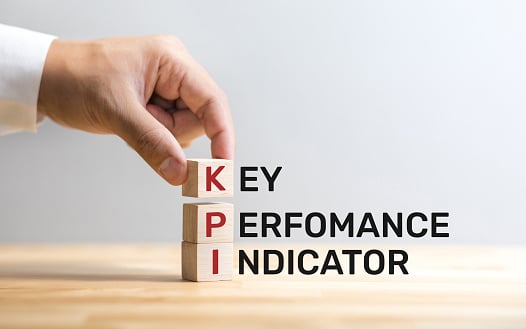Has Marketing Analytics Turned Into a Gym Membership?
Get the Omnichannel Marketer's Attribution Handbook
We all know how it goes. After the indulgence of the holidays comes the New Year’s resolutions, the new workout clothes, and the new (or once again renewed) gym memberships. Health and wellness devotees start racking up the miles on the treadmill and pumping iron, keeping one eye on what they’re eating and the other eye on the scale.
For a little while.
Then comes the realization that progress – and therefore results – are a marathon, an on-going process that requires persistence, patience, and dedication. The January gym-goers start tapping out in waves. By March most gyms are back to the smaller group of die-hard exercisers, and the January mayflies are back to looking for a magic cure-all solution. They want sprint-like results, a quick fix rather than a longer-term adjustment of habits and attitudes.
As it turns out, marketers have the very same problem when it comes to analytics and activation. After all, today’s marketing and analytics platforms provide more solutions and insights than ever. So why aren’t we seeing more marketers embrace these new technologies?
The Allure of Marketing Analytics
Just like we are motivated to hit the gym in January, we leave a sales conference or industry event excited to try the new tools and platforms we just saw…only to have that excitement fade the minute we walk back into our office.
We’ve all fallen victim to it- the “high” and eventual “crash” that comes with a shiny new strategy.
You attend the latest event to see what’s in, what’s out, and what tools and strategies you can use to get better results and a better ROI. You come in with budgets, buy-ins, and RFPs all set and ready to go. Caught up in the conference buzz, you are ready, willing, and able to commit.
But, like the gym in March, the excitement and initial intent fail to translate into activation when you return to the office. All the buzz and energy dissipate, and you return to the same old outdated, but familiar, analytic tools and strategies because it’s easier and you don’t have time to implement new tools.
Marketers have long bemoaned the fact that analytics can lag and drag, or worse, just aren’t actionable enough. Marketing and advertising move at the speed of the internet, after all, and brands need data that helps deliver real-time results.
Today’s marketing and analytics platforms provide more solutions and insights than ever. With granular data and machine-driven learning, marketers can tailor their messages faster and more effectively than at any other time in history.
So why aren’t more marketers taking advantage of the in-depth analytics that would accelerate their marketing and put their brands head and shoulders above the competition? Why is there still a silo between the analytics teams and the marketing teams? Perhaps, as it goes for so many of us, the secret is in the old phrase “All’s well that begins well” – just like at the gym.
Go From Overwhelmed to Overjoyed and Re-Integrate Your Analytics and Marketing
The world is changing so quickly, and the realm of marketing analytics is no exception.
It’s easy to feel pressured by outside forces to constantly do more in less time, in addition to the internal pressure of excitement for a new tool and an eagerness to excel in your career.
But the issue with giving into these pressures is twofold.
First, as we all know, “haste makes waste”, both in the gym, and in life. One protein shake to help build your muscles might be great, but chugging an entire days’ worth of protein at one sitting in an attempt to speed up your results is a recipe for stomach upset, not bigger muscles.
Second, just like our bodies need time to get used to being a gym-goer, any complex and multi-pronged marketing strategy with lots of moving parts and customer personas needs time to adapt to a new analytics program. You’ll constantly come up with little tweaks and improvements to your marketing analytics strategy as you watch how your new technology unfolds itself over time.
Rushing to realize a year’s worth of results within a few weeks, no matter how powerful the tool might be, is like trying to bench-press 100lbs when you’ve never before lifted heavier than 20lbs. It’s a recipe for torn muscles or broken systems and a whole lot of downtime and frustration that could have been avoided with a little more temperance.
Just like starting a new workout regime, starting up any new marketing initiative has to be handled strategically and thoughtfully – taking a little time beforehand to plan out not only your objectives, but the steps you’ll take to get there, will let you reap even greater rewards from your efforts down the line.
1. Create a Plan of Attack
A new gym member steps into a room full of strange machinery and devices. Before today they hiked with friends, did some sit ups and push-ups and went for the occasional jog. Now they’re here – in a labyrinth of metal contraptions and sweaty fellow fitness buffs.They wander around, bewildered, wondering about how to start their own particular health journey. It’s easy for the new member to feel overwhelmed, and perhaps discouraged. “Where do I start? What’s step one?” Marketers must think the same way.
Stop before taking on too much in your unbridled excitement to use your new tool “to the fullest” – instead, take a step back and realize that any new initiative takes time to build and optimize, and by adding a huge scoop of new integrations and data all at once, you’re likely to go into “calorie overload” and undo the hard work you’ve put in by trying your new marketing analytics tool in the first place.
Give yourself some space to create or adapt your marketing strategy gradually, instead of pumping so much iron that you pull a proverbial muscle and have to quit the gym altogether. Give your marketing – and your muscles – time to adapt and integrate the influx of new stimuli into your existing processes.
2. Start Small
January gym-goers are carrying an ideal version of their bodies in their minds – and almost all of them want to see results right now, today. Some face the overwhelm of not knowing where to start; others risk injury by diving in and doing too much, too soon, in an effort to supercharge their fitness regime. They want to see results everywhere, from their biceps to their body weight, and they want to see it now.
Combat this impatience by creating shorter-term commitments for your marketing plans– one month instead of twelve, perhaps – and pushing the importance of small-scale campaigns.
Put an emphasis on smaller steps, on experimentation and building confidence by seeing what moves the needle on a small scale before going all-in on a big initiative. For example, start with a local campaign rather than a national one, or roll out just one or possibly two channels at a time instead of deluging yourself with new data from all your channels, all at once. Don’t go straight for the $10m dollar campaign – throwing a large budget into a new and untested tool or strategy gives you even more chance of losing in a big way than of winning. Instead, start with a $10k dollar campaign – give yourself room to “fail small” and tweak your strategy to perfect it before rolling it out in a major way.
Give yourself the freedom to learn by doing, without immediately jumping into the “deep end of the pool”.
3. Solo Siloes
A fitness journey involves more lifestyle changes than simply making space on your calendar for a few hours at the gym every week. Like the weight loss adage “Eat less, move more” says, going to the gym isn’t enough. People need to address their diet as well. You’ve got to feed muscles to build muscles.
Your activation problem may not be with you as a marketer. The disconnect between who’s marketing and who’s in charge of analytics can create major gaps in your organization’s marketing strategy, which leads to a lack of results and a lack of commitment. If the speed with which a marketer gets their insights is too slow, any changes they make are already out of date.
By making sure the analytics team is just as “on board” with the new strategy as the marketing team, you’ll be able to ensure that the data you’re collecting is actually doing your marketing strategy some real good, instead of just falling off into thin air for lack of implementation or a marketing-analytics disconnection.
Activate with Confidence
Fad diets promise miracles – rapid weight loss, no need to exercise, no need to stop eating the foods you love. January gym-goers often fall prey to their promises, and are disheartened and disappointed, which means it’s back to Square One by March.
Many marketers fall into the same excitement-overwhelm-failure cycle as those crash dieters. They expect too much too soon, without having a real plan, strategy or structure in place to help them get the results they crave.
The key here is understanding both the particular pain points in your marketing strategy and the exact, actionable pieces of data that would make it better. You’re not short of tools to collect, deliver or analyze that data – you have your gym membership, water bottle and towel. Now the key is to connect those analytics solutions to the right places in your marketing strategy, one by one, and to “beef up” your marketing results along the way just like a weightlifter “beefing up” their physique – one muscle (or data point!) at a time, not all at once.





















